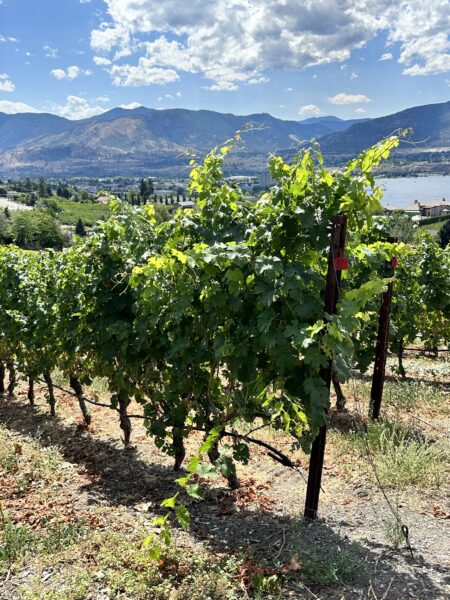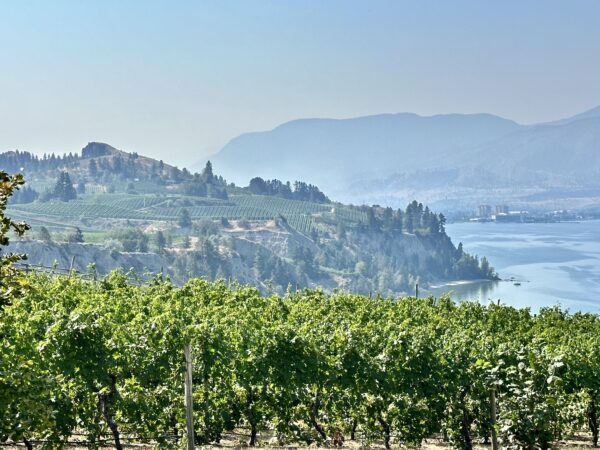It is no secret that one of the things that drew us to the Okanagan is the local wine industry. At one time second to the Niagara industry in economic production and acreage devoted to grapes it now rivals Niagara. As you drive south through the valley you can see vasts swaths of vineyards on either side of the lake. There are more than 200 wineries and the economic output is more than $500 million dollars.

The first vine traces its origin all the way back to 1859 when Father Charles Pandosy travelled with a group of his fellow French oblate missionaries to establish a permanent white settlement in the Okanagan Valley. The missionaries built a chapel, a school and planted the first grape vines in the region for sacramental purposes.
While grapes have been grown since the 1800s things went quiet during prohibition. In the 1930s Italian immigrants started the first wineries but it wasn’t until the 1970s that hybrid grapes which produced excellent wines were produced. For 175 years grapes have been produced in the Okanagan.

However, 2024 might be the first year with no grapes.
November and December were quite mild and while people were pleased with (except those who like to ski and snowshoe) farmers were anxious as fruit trees and vines didn’t get ‘winter hardened’. In January a polar vortex brought frigid temperatures into the valley where it was below – 20 degrees celcius for more than 48 hours.
Grapes are hardy plant but they do not do well with temperatures below – 20 degrees celcius. 48 hours of those temperatures can be deadly. Initial surveys of vineyards suggests that the cold killed 95-99 % of the buds which start to grow a year before they actually produce grapes.

At this point vineyard owners are confident that the plants themselves haven’t been killed but they wont really know until the spring.
Larger wineries will be able to manage the year with no grapes by staggering the release of wine already in the cellar to fill the gap. Smaller wineries don’t have the same levels of wines in reserve and will face difficulties. These larger wineries also likely have restaurants, large tasting rooms, and even guest houses which will also supplement the loss of income from the grapes. Smaller wineries do not have these added income streams.
Now is the time to support the BC wine industry. Buy Okanagan produced wines. Visit the area and support the wineries.